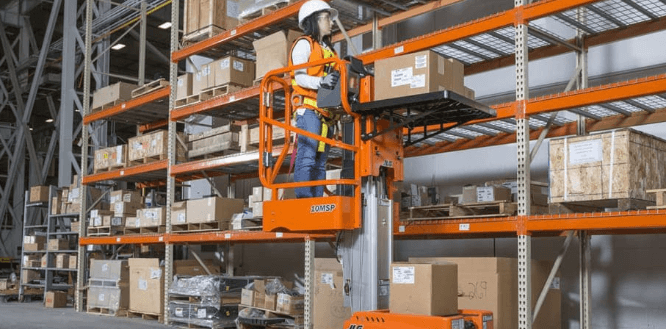Types of Warehouse Equipment Used to Transport Goods

In the world of warehousing and logistics, efficient and safe movement of goods is of utmost importance. This is where warehouse equipment comes into play. Various types of warehouse equipment are used for transporting goods within a warehouse environment, ranging from hand trucks and pallet jacks to conveyor systems and a warehouse trolley.
Hand Trucks
Hand trucks, also known as dolly carts, are simple and versatile warehouse equipment for transporting small to medium-sized loads. They consist of a small platform with wheels and a handle for pushing or pulling. Hand trucks are particularly useful for moving goods over short distances or in areas with limited space. They are also commonly used in retail stores and supermarkets for restocking shelves.
Pallet Jacks
Pallet jacks, also known as pallet trucks, move palletised loads around a warehouse environment. They consist of a set of forks that slide under a pallet and a hydraulic pump that raises the load off the ground. Pallet jacks are useful for moving heavy loads and can easily maneuver in tight spaces. They come in different sizes, from manual to electric, and are often used with other warehouse equipment.
Forklifts
Forklifts are one of the most commonly used warehouse equipment for transporting goods. They are powered industrial trucks that lift and move heavy loads over short distances. Forklifts are designed to handle palletised loads and can easily maneuver in confined spaces. They come in different sizes and types, ranging from small electric forklifts to large diesel-powered ones capable of lifting up to 50 tons.
Tuggers and Tow Tractors
Tuggers and tow tractors are used to tow or pull loads within a warehouse environment. They consist of a small platform with wheels and a towing hitch that can be attached to a cart or trailer. Tuggers and tow tractors are particularly useful for moving heavy loads over long distances or in high-traffic areas. They are also commonly used in manufacturing plants and distribution centres.
Warehouse Trolleys
A warehouse trolley, also known as a platform truck or hand cart, transports goods within a warehouse environment. They consist of a platform with wheels and a handle for pushing or pulling. They are particularly useful for moving small to medium-sized loads over short distances. They come in different sizes and types, from manual to electric, and can be customised to meet specific warehouse needs.
Conveyor Systems
Conveyor systems move goods from one location to another within a warehouse environment. They consist of belts, rollers, and other components transporting goods along a conveyor line. Conveyor systems are beneficial for quickly and efficiently moving large volumes of goods quickly and efficiently. They are also commonly used in manufacturing plants and distribution centres.
Automated Guided Vehicles (AGVs)
Automated Guided Vehicles (AGVs) are self-guided vehicles that transport goods within a warehouse environment. They are equipped with sensors and onboard computers that enable them to navigate a warehouse autonomously. AGVs can be programmed to follow specific routes, pick up and drop off goods, and even communicate with other warehouse equipment. They are particularly useful for repetitive or high-volume tasks and can operate 24/7 with minimal supervision. AGVs, from small carts to large forklifts, come in different sizes and types and can be customised to meet specific warehouse needs. They can also be integrated with other warehouse management systems, such as inventory tracking and order management, to enhance warehouse efficiency.
Conclusion
In conclusion, several types of warehouse equipment are used to transport goods within a warehouse environment, and each type has unique features and benefits. From the above points, there is a piece of equipment to suit every warehouse need. Understanding the features and benefits of each type of equipment can help warehouse managers make informed decisions about which equipment to use for their specific needs, resulting in safe, efficient, and cost-effective warehouse operations.




